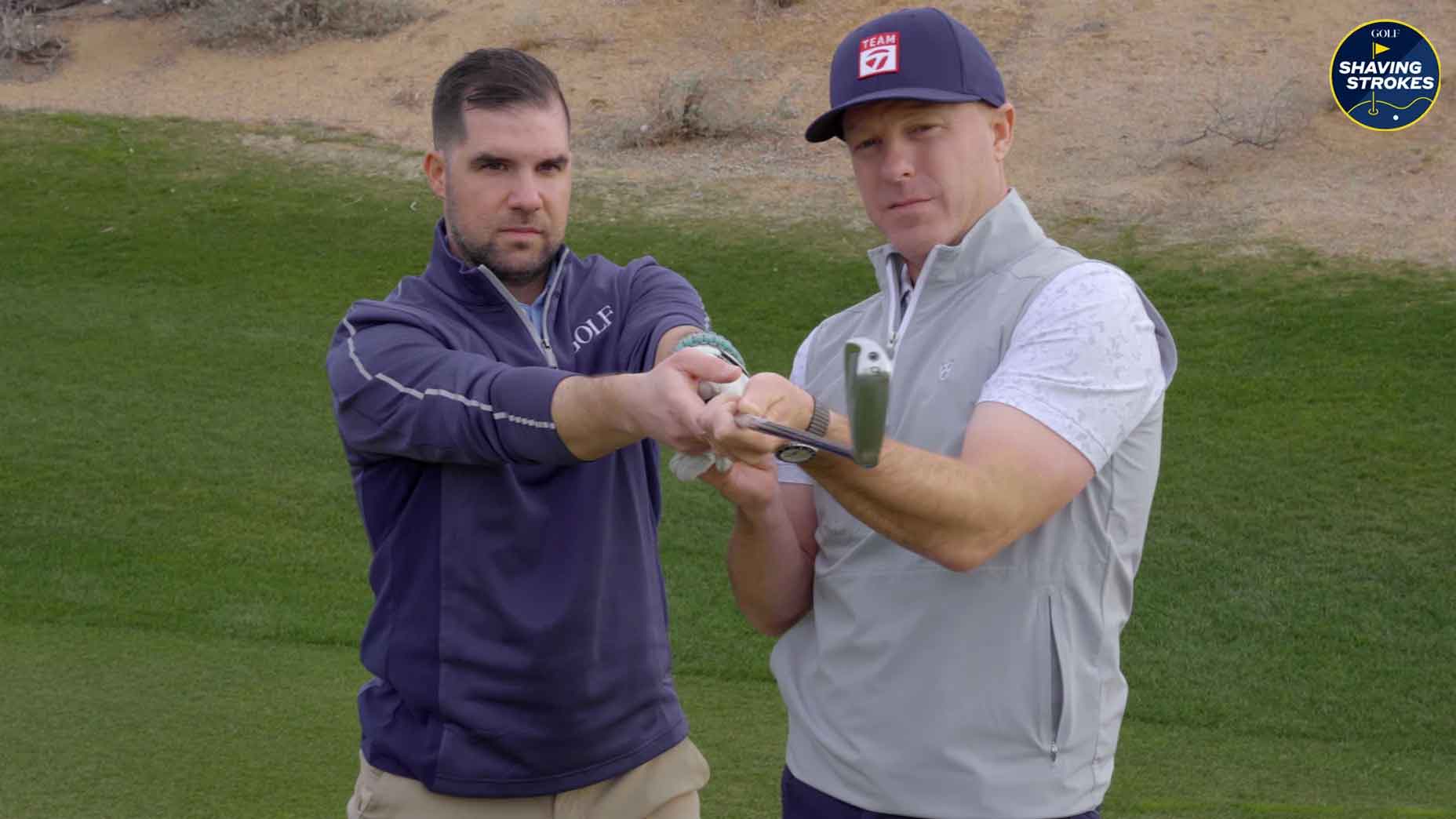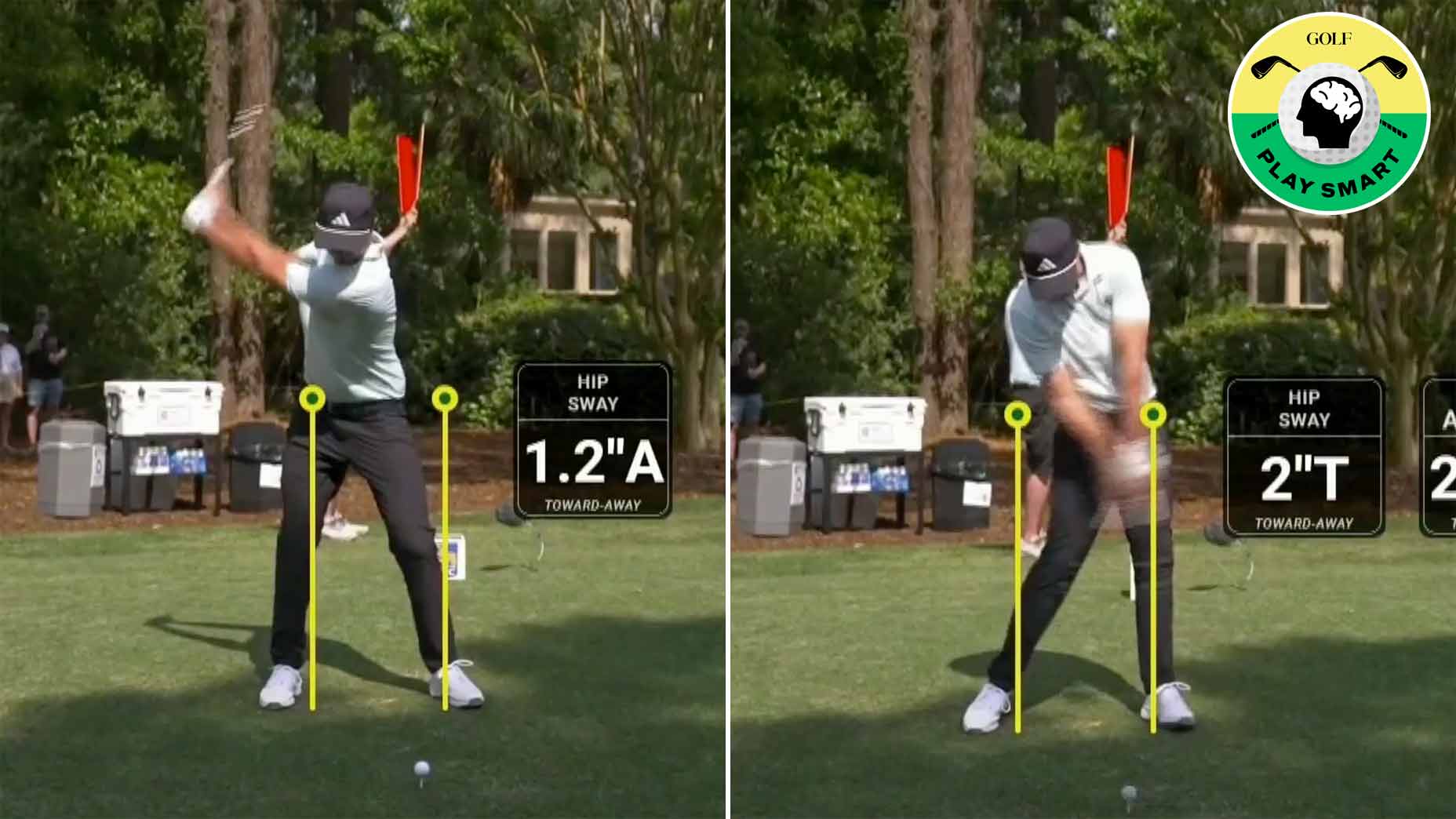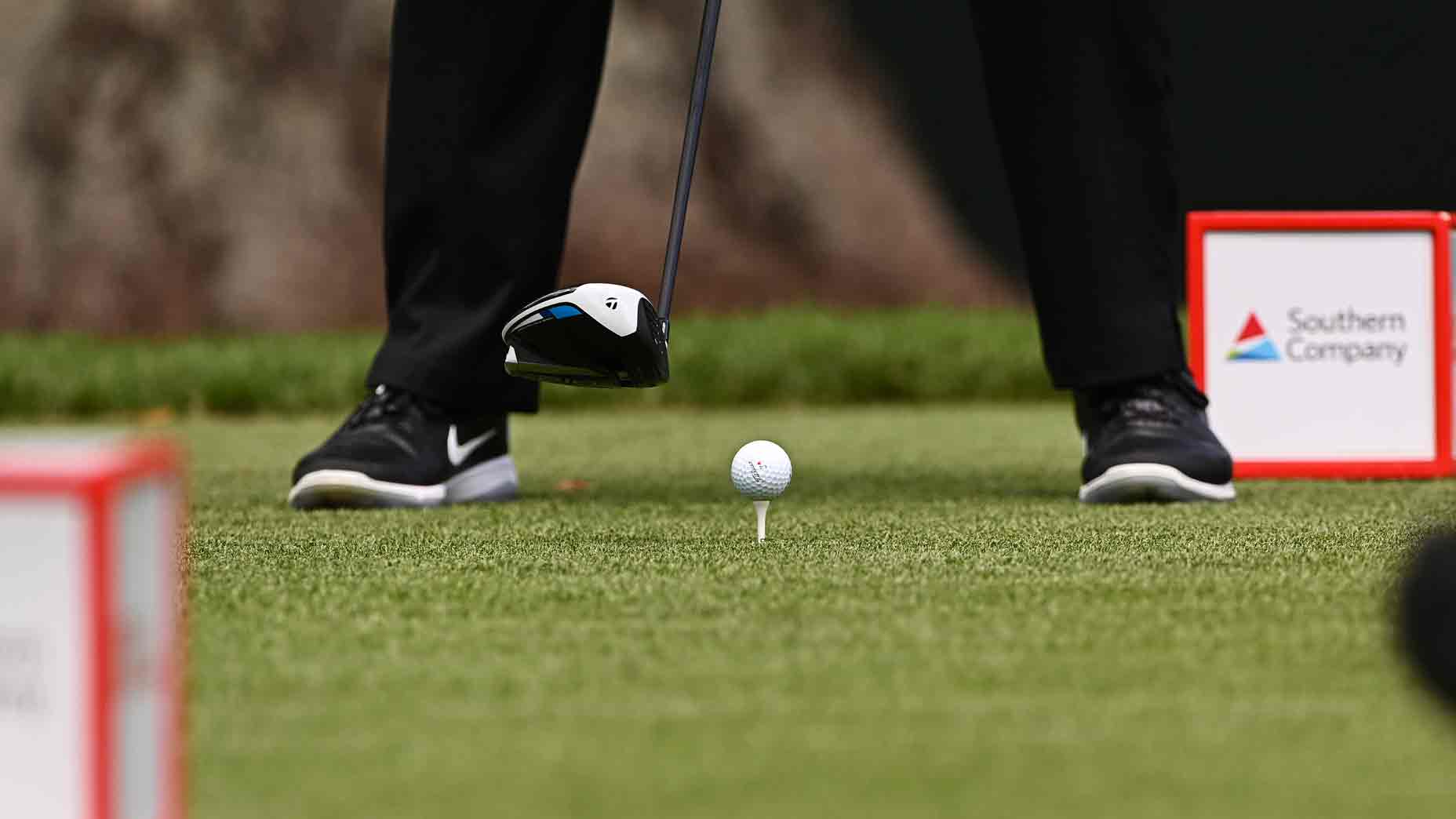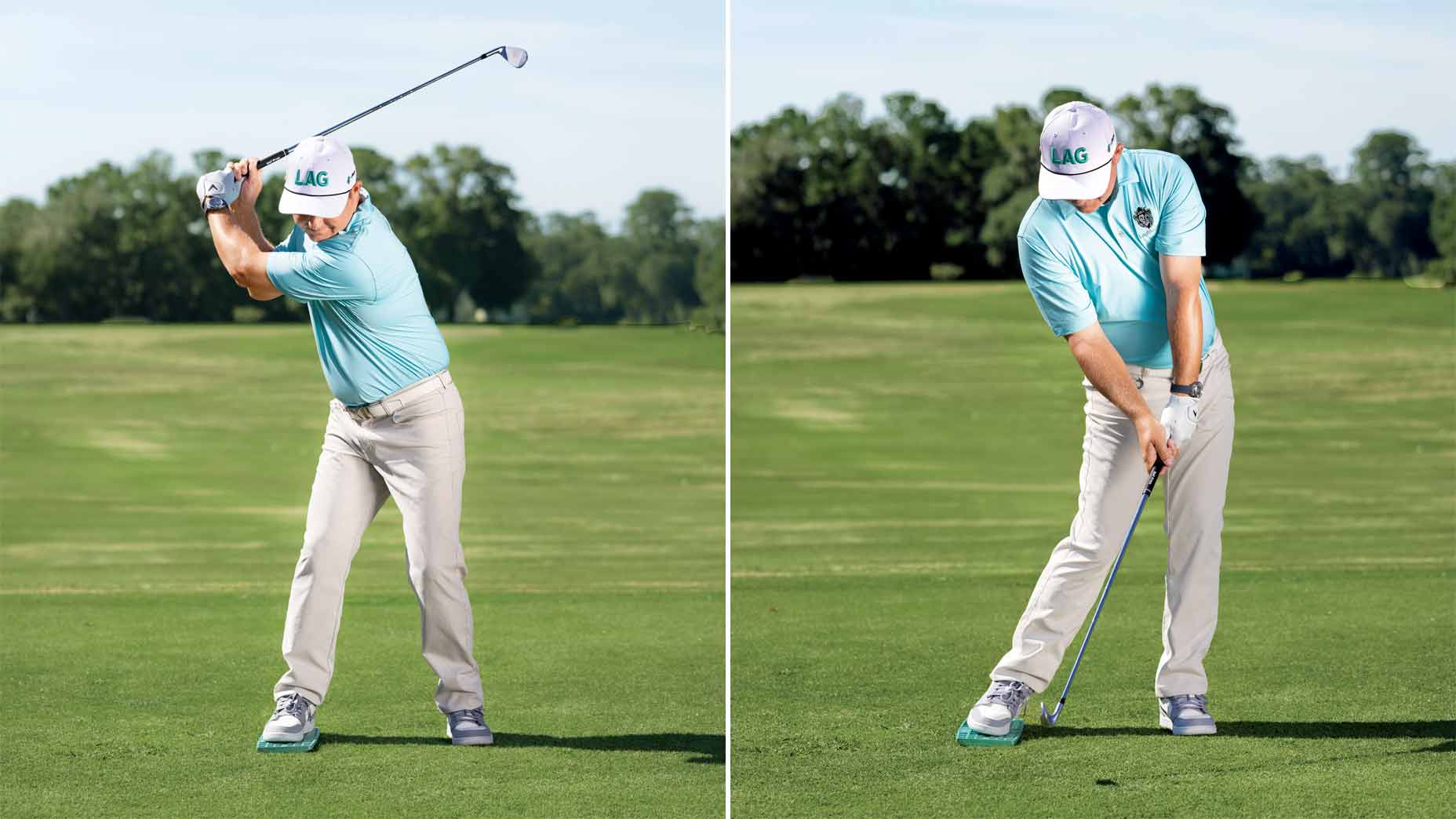About 43 percent of all your strokes occur with a putter in your hands. That’s a hefty proportion, considering you have 13 other clubs in your bag. Maybe it’s time to cut that percentage down and start making more putts.
Start by analyzing your grip. Building a hold that gives you trust and confidence is critical. And despite what you may hear, there are no guidelines to crafting the right putting grip for you. My mantra: “The best way to putt is with the grip and stroke that helps you hole the most putts, while also avoiding 3-putts.”
We all have different stroke mechanics, to say nothing about hand sizes and body rhythms, so the best grip for you may well be different from anyone else’s. That’s fine. But before you start tinkering, take a look at the photos below. Each picture—taken shortly after impact with a driver (left), pitching wedge (middle) and putter (right)—shows that my right hand is in almost the same position just after the strike: a little “on top” of the shaft and in-line with the target line.

This is the natural position for nearly all golf swings, except putting. The only reason you see my right hand in that position in the putting photo is that I’m using a saw grip. If I had started with a conventional grip and allowed my right hand to rotate into position as in the other two pictures, my putterface would be dead shut and I probably would have missed the putt. Although the saw grip falls into the “alternative” or “unconventional” category, it may be the most natural hold of all, because with the saw grip your right hand never strays from the correct impact position, from start to finish.
That’s the saw’s primary advantage. It automatically removes any temptation to rotate the putterface through impact, and almost assures a square strike.
Granted, the saw grip won’t work for everyone (remember, we’re all different). The only way to know if it’s right for you is through good old-fashioned experimentation: testing it out on short putts (six feet and three feet in a circle around the cup), medium-length putts (10-, 20- and 30-footers); and then long lag putts (35 feet and longer). From my testing over the last 10 years with amateurs in my schools and professionals on the PGA Tour, the saw grip consistently provides superior results for putts inside 10 feet and good results for putts from 12 to 20 feet. But performance on long putts tends to be worse than with conventional grips.
Which brings me to another of my deep-rooted tenets: you don’t have to use the same grip on all putts. Run your own test on the practice green. If the saw feels good on short and medium-length putts, commit to it for 10 straight rounds. Keep track of your putting stats. If that’s too much to ask, focus more on how the saw feels. If it boosts your confidence and trust in your stroke, you’re onto something good, and you’ll see it in your scores.






